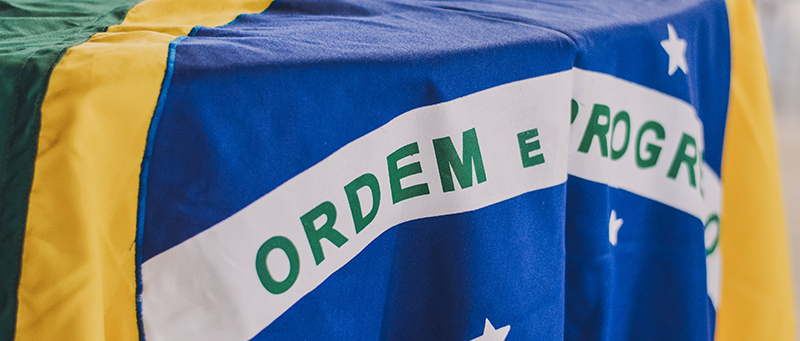Brazil is one of the world’s biggest gaming markets and it is starting to gain a lot of attention thanks to its huge market potential and rapid growth in recent years. You can expect a lot of competition if you are planning to target the Brazilian gaming market over the next few decades, but publishers who truly understand the country’s gamers will come out on top.
This article provides a snapshot of the Brazilian gaming market and the key factors that need to be considered in your game localisation strategy when targeting this market.
Overview of the Brazilian gaming market
Brazil is the 10th biggest gaming market in the world, based on revenue (USD 2.69 billion), according to the latest insights from Newzoo.

The country also has the third highest number of gamers in the top 10, with over 100 million gamers with a penetration rate of 61.6%. This is higher than both the US (60.8%) and China (46.4%).
In a separate report, Newzoo describes Brazil as a “mobile-first games market” with 70% of its online population playing games on their mobiles. Brazil is also the world’s fifth largest population of smartphone users with 131.73 million actively using a smartphone.
With a smartphone penetration rate of 61.6%, Brazil still has plenty of room for growth in the mobile gaming market when looking at comparable rates in Germany (80%), Japan (75.2%) and the US (72.1%).
Understanding Brazilian gamers & what makes this market unique
Based on various available reports on the Brazilian gaming market, we have listed some of the most important insights that describe gamers in the country and make this market unique:
- More than 70% of Brazilians now play video games.
- 51% of gamers in the country are male, overtaking female gamers who were the majority until recently.
- Fortnite is the top PC and console game in Brazil by monthly active users (MAUs).
- Shooter, adventure and sports games are the top three genres.
- 43% of gamers in Brazil spend money on in-game purchases and/or subscription fees.
- 24% of Brazilian gamers are classed as ‘Popcorn Gamers’ (aka those who play a little, but watch more gaming content).
- 72% of Brazilian gamers play some form of eSport; one of the biggest growth sectors in the market.
- Roughly 5% of people in Brazil have some level of English language proficiency.
Until recently, the majority of gamers in Brazil were female and, even now, roughly 49% of the country’s gaming population is female. Mobile gaming dominates in the country but console and PC gaming is still popular, particularly among male gamers.
English proficiency in Brazil sits at around 5%, placing it in the “low proficiency” category of the EF English Proficiency Index – something game developers need to take seriously if they want to crack the Brazilian gaming market.
Knowing the game localisation challenges of Brazilian Portuguese
Given the relatively low levels of English proficiency in Brazil, quality game localisation is essential for developers looking to target this market. We have covered some of the key characteristics of the gaming market itself but the most important factor in any game localisation strategy is the language you are dealing with.
In this case, we are talking about Brazilian Portuguese and this brings us to the most important point: never settle for European Portuguese when localising for Brazilian gamers. These are two different languages with vast spelling; pronunciation; wording; and some important grammatical differences too (e.g. the creation of verbs from nouns).
Aside from this, Brazilian Portuguese brings some unique challenges to your game localisation strategy such as:
- Text expansion often averaging between 25%-30% from English.
- Sentence length also increases for any voice-over tracks.
- Synching may be challenging due to text expansion and increased sentence length.
- Special characters include cedilla (ç), acute accents (á, é, í, ó, ú), circumflex accents (â, ê, ô), tilde (ã, õ) and grave accents (à, è, ì, ò, and ù).
- Font support for special characters can vary, limiting your choices and making consistency more challenging.
- Slang usage varies greatly across Brazil, one of the world’s biggest countries by landmass and population.
- Genders apply to most words in Brazilian Portuguese and these need to match throughout the entire sentence, sequence or references.
- Conventions for both European and Brazilian Portuguese have changed in recent years (such as spelling and consistency rules) and further changes are always a possibility.
If the aim is to maximise ROI by translating for gamers in Brazil and Portugal, make sure you cater for both languages properly and understand the market differences between the two.
Is your localisation strategy ready for the Brazilian gaming market?
The Brazilian gaming market is one of the most exciting opportunities for game developers right now, but it is important to respect gamers’ demands from such a dynamic country and language background.
Publishers who underestimate the challenges of localising games for Brazilian Portuguese will find out the hard way that it is not something you can do by halves. A comprehensive localisation strategy is required that informs every stage of planning, writing, development and marketing in order to win over Brazilian gamers – as well as a rock-solid, multilingual customer support system to keep hold of them.

